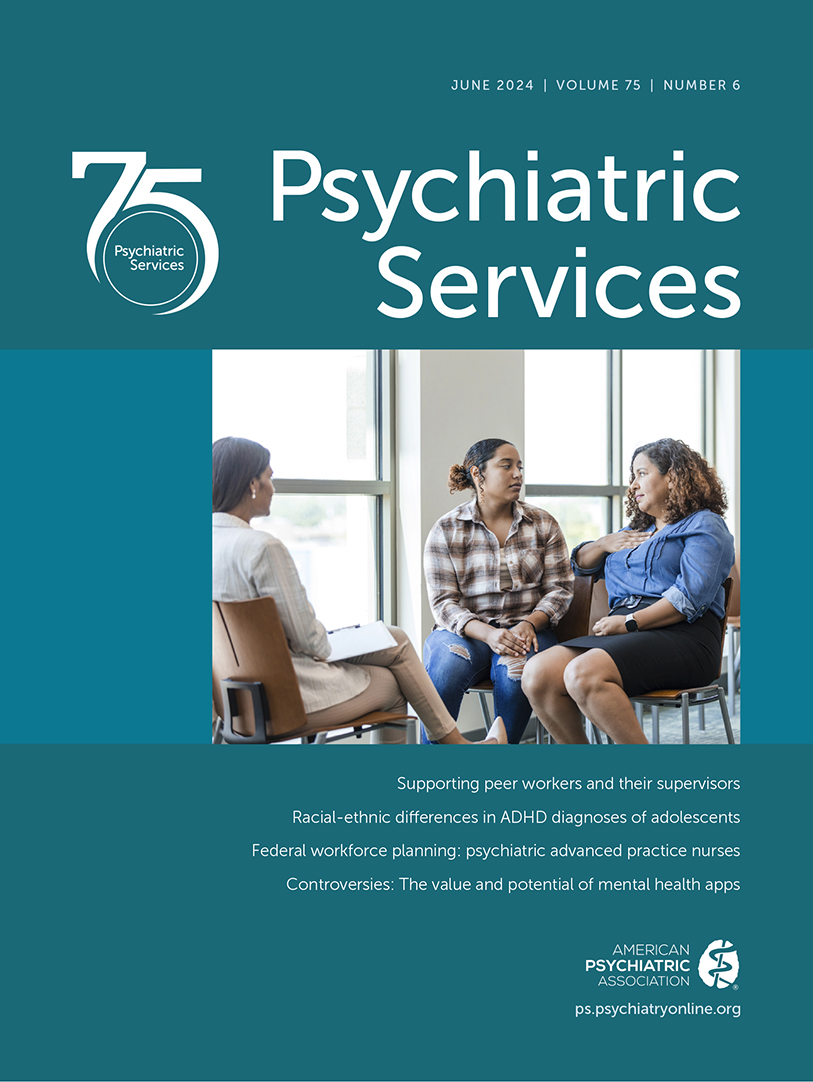Unveiling Clinician Mindsets on Suicide Care
Centers for Disease Control and Prevention data suggest a consistent increase in suicide deaths, by over 35% between 2000 and 2022, challenging health care providers to find the most effective, efficient, and equitable ways to address suicide care and related implementation strategies. In this issue, Larkin et al. (1) assessed clinician attitudes toward suicide prevention practices across various roles and settings before implementing the Zero Suicide model. The study demonstrated that while progress has been made in advancing suicide care, there is still work to be done to create ongoing and sustained impact.
A first of its kind, the study surveyed full-time providers within a large nonprofit health care system in Massachusetts. The sampled group represents multiple levels of staff. A total of 5,559 clinicians were invited to participate, and 22% (N=1,224) responded. Eighty-one percent of the respondent pool was female, 86% were White, and 55% were nurses; thus, although results may indicate a comfort with both suicide screening and care delivery, they may not represent the overall opinions of other types of caregivers.
Although we applaud the authors for assessing attitudes around suicide screening, assessment, and safety planning, we wonder about prior education related to suicide practices and whether the system provided annual training on suicide care or relied on previous exposure within professional school and certification programs. The survey questions offer some insight about suicide care skills and related leadership priorities and address baseline knowledge. In addition, nurses, medical providers, and patient care assistants scored neutral (3 on a 5-point Likert scale) or below for most aspects of suicide care (risk assessment, brief counseling, safety planning, making a referral), indicating limited or little knowledge of the topic. Notably, patient care assistants, whose scope of care does not typically involve advanced suicide care practices, had a median score of 1 for all questions, indicating less familiarity with the topic.
The findings suggest that 65% of those surveyed felt confident that they had the skills to screen individuals for suicide but that responders were far less confident in conducting suicide assessment and intervention (≤50%). Although suicide is one of the leading causes of mortality in the United States, specific education around suicide care does not receive the same priority across educational training programs. Behavioral health professionals have long supported normalizing more education on mental health care, including suicide care; however, this study suggests that knowledge gained through educational efforts (professional schools, postgraduate job training) has not translated to confidence in clinical care delivery of suicide care. In fact, the neutral or poor responses to suicide care interventions (brief counseling or safety planning) illustrate considerable gaps based on self-assessed clinician attitudes.
In the study sample, behavioral health and emergency department providers felt most comfortable with suicide interventions, which may result from more extensive subspecialty training for behavioral health clinicians and more frequent encounters with patients experiencing acute suicidality. Suicide care education should follow a strategy of providing initial education and refreshing regularly, as with other core medical skills. As one of the seven elements of Zero Suicide, “train” focuses on ensuring safer suicide care education for all staff, as well as regularly providing refresher training.
Almost half of the respondents felt that universal suicide screening would slow down clinical care, with only 23% feeling they would have adequate time to implement a safety plan with an at-risk patient. These results highlight the risk for unsuccessful implementation of life-saving care processes. Integrating a continuous quality improvement (CQI) model into organizational improvement initiatives allows teams to use tools such as key driver diagrams, process maps, and iterative improvement strategies to better understand clinician attitudes and needs related to implementation of enhanced care programs like Zero Suicide. Assessing the time needed for suicide care compared with other medical aspects of care could be important. When staff are involved in addressing workflow issues, their confidence and willingness to implement changes in clinical settings may be improved.
Health care systems remain in a critical position to guide strategic efforts to reduce suicide rates. Pairing CQI with change management models and robust training programs, leaders can create urgency and purpose around large-scale initiatives using small tests of change and gaining champions within their organizations, with the goal of improving care delivery and increasing engagement in applying core clinical skills.
1. : Clinician attitudes toward suicide prevention practices and their implementation: findings from the System of Safety Study. Psychiatr Serv 2024; 75:534–542Abstract, Google Scholar



